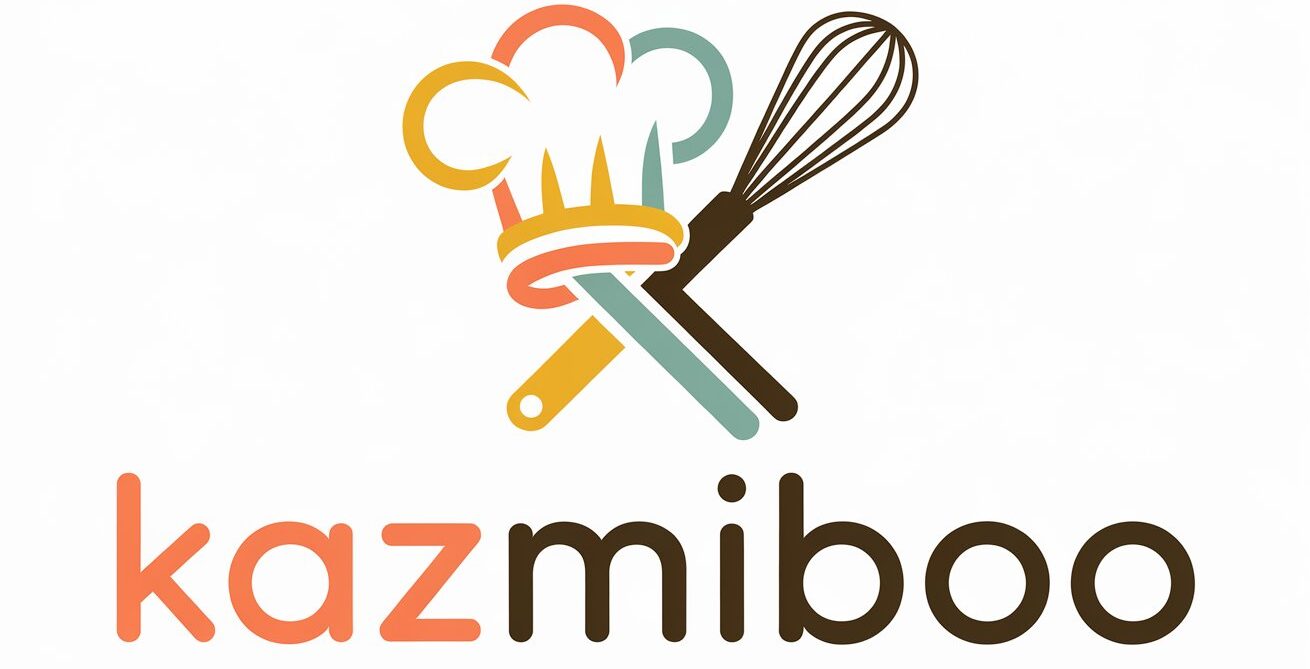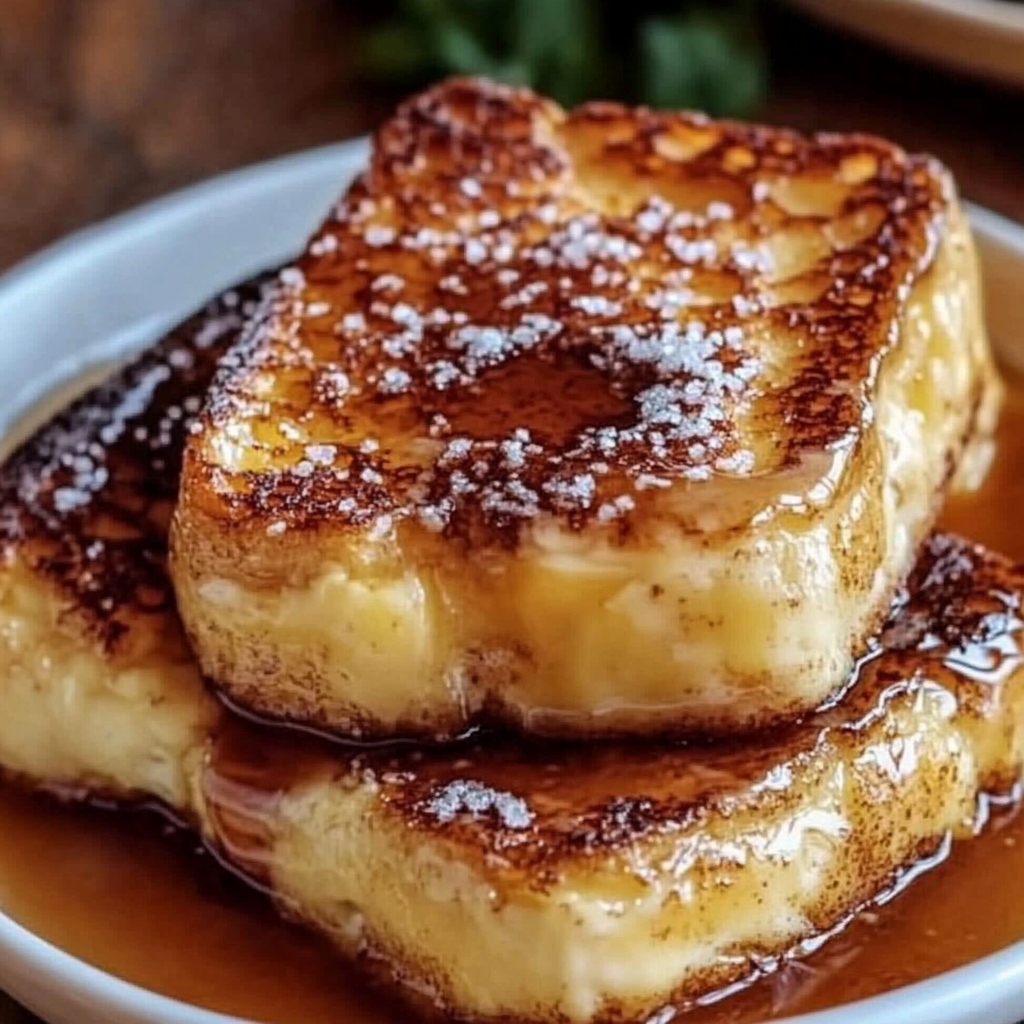Detailed Outline for “Overnight Crème Brûlée French Toast”
1. Introduction: The Ultimate Morning Indulgence
- Why French Toast is a Breakfast Classic
- A Twist on Tradition: Crème Brûlée Meets French Toast
- The Appeal of Overnight Recipes
- What Makes This Recipe Special?
2. Understanding the Basics of Crème Brûlée French Toast
- What is Crème Brûlée?
- The Perfect French Toast Base
- Combining the Two: Why They Work
- Texture and Taste: What to Expect
3. Ingredients: Building the Perfect Crème Brûlée French Toast
- The Bread: Choosing the Right Base
- Dairy: The Importance of Heavy Cream and Eggs
- Sugar: Balancing Sweetness for the Perfect Crunch
- Flavor Add-ins: Vanilla, Cinnamon, and More
4. Step-by-Step Guide: How to Make Overnight Crème Brûlée French Toast
- Preparing the Bread: Cutting and Soaking
- Making the Custard: The Key to Creamy Perfection
- Assembling the Dish: Layering and Resting Overnight
- Baking the French Toast: How to Achieve a Golden Crust
5. Tips and Tricks for the Best Crème Brûlée French Toast
- Choose the Right Bread for Optimal Absorption
- The Importance of Proper Soaking Time
- Tips for a Perfect Crème Brûlée Crust
- How to Prevent Soggy French Toast
6. Serving Ideas: Make It a Meal to Remember
- Garnishes: From Berries to Whipped Cream
- Serving Pairings: What Goes Well with Crème Brûlée French Toast
- Creative Twist Ideas: Adding Liqueurs, Fruits, or Nuts
- Ideal Occasions for Serving This Dish
7. Common Mistakes to Avoid When Making Overnight Crème Brûlée French Toast
- Over or Under Soaking the Bread
- Using the Wrong Type of Bread
- Forgetting to Caramelize the Sugar Topping
- Baking at the Wrong Temperature
8. Conclusion: Why Overnight Crème Brûlée French Toast is Worth the Wait
- Summary of Key Steps and Tips
- Final Thoughts on Why This Dish is a Must-Try
- Encouragement to Experiment and Make It Your Own
9. FAQs About Overnight Crème Brûlée French Toast
- Answering the Most Common Questions
1. Introduction: The Ultimate Morning Indulgence
French toast. It’s that warm, comforting dish you crave on lazy weekends or when you want to impress a guest. But what happens when you take this classic breakfast dish and elevate it to new heights? Enter Overnight Crème Brûlée French Toast. A decadent twist on the original, this version incorporates the luxurious custard and crispy sugar topping of crème brûlée, combined with the familiar comforting texture of French toast. The result? A breakfast masterpiece that you can prepare the night before.
What’s even better is the overnight aspect of this recipe. No early morning rush to prepare breakfast? Yes, please! Instead of scrambling to get everything together in the morning, you can assemble the dish the night before and wake up to a delicious, no-fuss breakfast. And trust me, it’s worth the wait.
In this post, we’ll break down how to make this indulgent treat from start to finish. You’ll learn how to pick the best ingredients, follow a foolproof method, and even discover some serving tips to make your dish even more delightful. So, get ready to add a little luxury to your mornings.
2. Understanding the Basics of Crème Brûlée French Toast
What is Crème Brûlée?
At its core, crème brûlée is a rich, creamy custard dessert made with egg yolks, heavy cream, vanilla, and sugar. What makes it stand out, however, is the signature caramelized sugar crust that forms when you torch or broil the sugar on top. This dessert is indulgent, rich, and smooth, which is why it pairs so wonderfully with the crunchy, eggy texture of French toast.
The Perfect French Toast Base
Now, traditional French toast is made by dipping slices of bread into a mixture of beaten eggs, milk, and sometimes sugar and spices. The bread is then fried in a pan until golden brown and crispy. It’s a simple, satisfying breakfast that everyone loves. But what makes this version “crème brûlée” is the addition of a custard-like soaking liquid. This makes the French toast extra creamy inside while still achieving that crispy, caramelized finish.
Combining the Two: Why They Work
When you combine crème brûlée and French toast, the result is a breakfast that’s both luxurious and comforting. The rich custard from the crème brûlée complements the fluffy texture of the French toast, while the caramelized sugar topping adds a satisfying crunch. Plus, the fact that you can prepare it overnight makes it incredibly convenient—meaning you can have your cake (or in this case, your French toast) and eat it too.
Texture and Taste: What to Expect
Expect a dish that’s silky on the inside, with a custard-like texture, while still offering the crispy edges and a golden-brown crust you expect from French toast. The sugar on top should melt into a crunchy, brûléed layer, giving each bite a delightful contrast between creamy and crispy. Add in the flavors of vanilla, cinnamon, and a hint of caramelized sugar, and you’ve got an unforgettable breakfast treat.
3. Ingredients: Building the Perfect Crème Brûlée French Toast
The Bread: Choosing the Right Base
The bread you choose plays a crucial role in the success of your French toast. Brioche and challah are the go-to options for a reason: they’re rich, soft, and absorb the custard without falling apart. Sourdough or French bread also work well, though they have a more rustic texture.
For the best results, opt for slightly stale bread. Fresh bread may not absorb the custard as well, while day-old bread holds onto the flavors more effectively.
Dairy: The Importance of Heavy Cream and Eggs
The richness of the custard comes from heavy cream and eggs. Heavy cream gives that silky texture that crème brûlée is known for, while the eggs help bind everything together. Using a combination of milk and cream will give you the perfect balance of richness without making it too heavy.
Sugar: Balancing Sweetness for the Perfect Crunch
In a traditional crème brûlée, you have a thick layer of caramelized sugar on top. In this recipe, we aim to recreate that effect by using a bit of brown sugar in the custard for richness and then sprinkling granulated sugar on top before baking. The sugar melts and forms a beautiful, crunchy topping that mimics the brûléed sugar from the classic dessert.
Flavor Add-ins: Vanilla, Cinnamon, and More
Flavor is key in bringing this dish to life. A good-quality vanilla extract is a must for that signature crème brûlée flavor. You can also add cinnamon, nutmeg, or a splash of bourbon for an extra layer of warmth. Feel free to get creative with flavorings, though vanilla and cinnamon are the perfect starting point.
4. Step-by-Step Guide: How to Make Overnight Crème Brûlée French Toast
Preparing the Bread: Cutting and Soaking
Start by cutting your bread into thick slices—about 1 to 1.5 inches thick. You want pieces that are sturdy enough to soak up the custard without falling apart. Arrange them in a baking dish, overlapping slightly if necessary.
Next, prepare the custard mixture by whisking together eggs, cream, milk, sugar, vanilla, and any spices you’re using. Pour the custard over the bread slices, making sure every piece is well-coated. Press the bread down gently to ensure it absorbs the custard. Cover and refrigerate the dish overnight.
Making the Custard: The Key to Creamy Perfection
The custard should be smooth and creamy, not too thick or too runny. The eggs provide structure, while the cream creates that luxurious richness. Make sure to whisk the mixture thoroughly so the ingredients are well-incorporated, and don’t forget the pinch of salt—it helps balance the sweetness.
Assembling the Dish: Layering and Resting Overnight
Once your bread is soaked, cover the dish with plastic wrap and refrigerate overnight. This allows the bread to fully absorb the custard, which is key to achieving that perfect creamy interior. Don’t rush this process! The longer it soaks, the better the texture will be.
Baking the French Toast: How to Achieve a Golden Crust
The next morning, remove the dish from the refrigerator and let it sit for about 15 minutes to come to room temperature. Then, bake at 350°F (175°C) for about 40-45 minutes. The French toast should be golden brown on top and slightly crispy around the edges. If you want an extra crispy top, sprinkle some sugar on top before baking and broil for a minute or two until it caramelizes.
5. Tips and Tricks for the Best Crème Brûlée French Toast
Choose the Right Bread for Optimal Absorption
Stale or slightly dried-out bread is your best friend. Fresh bread may become too soggy. Brioche or

